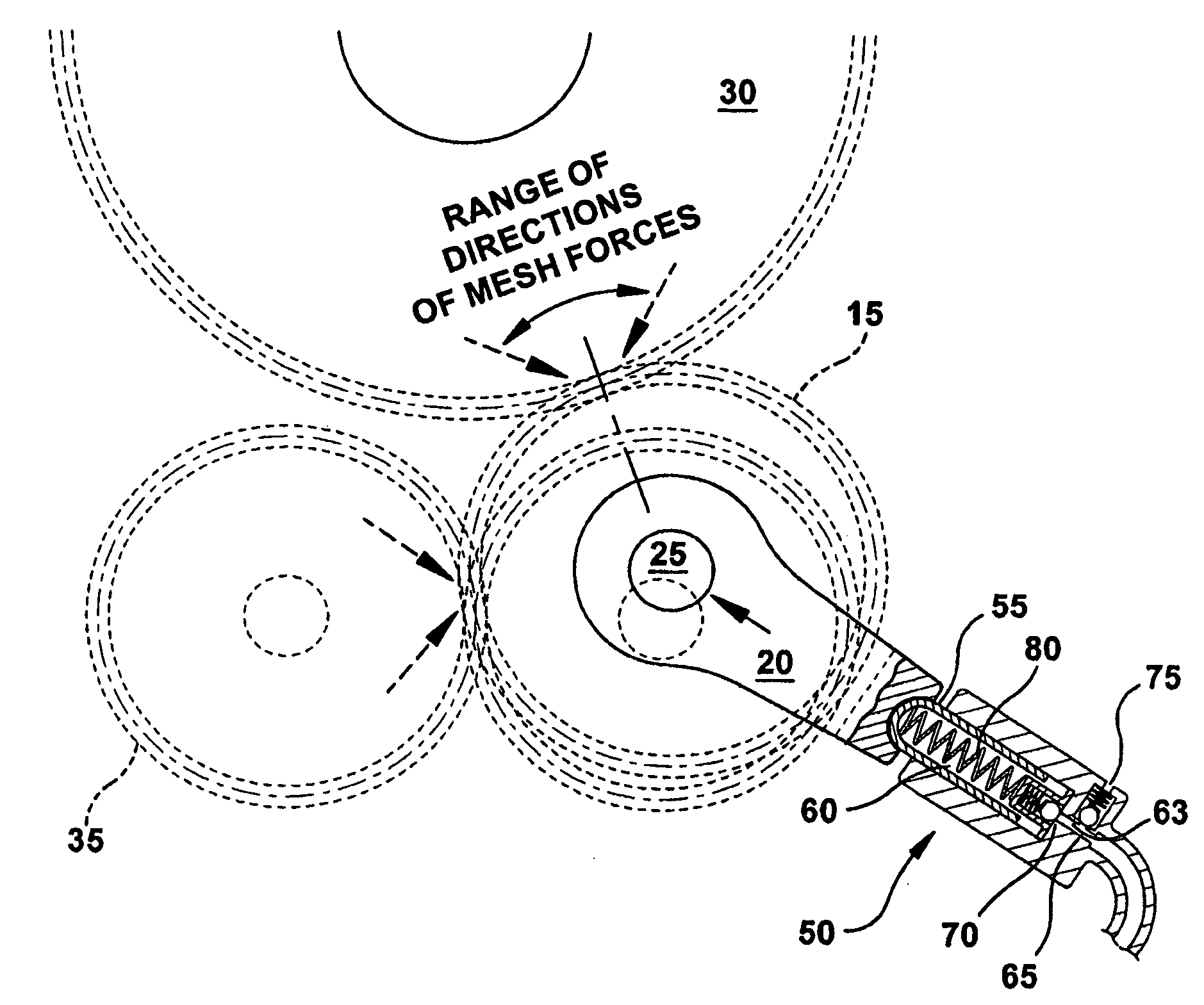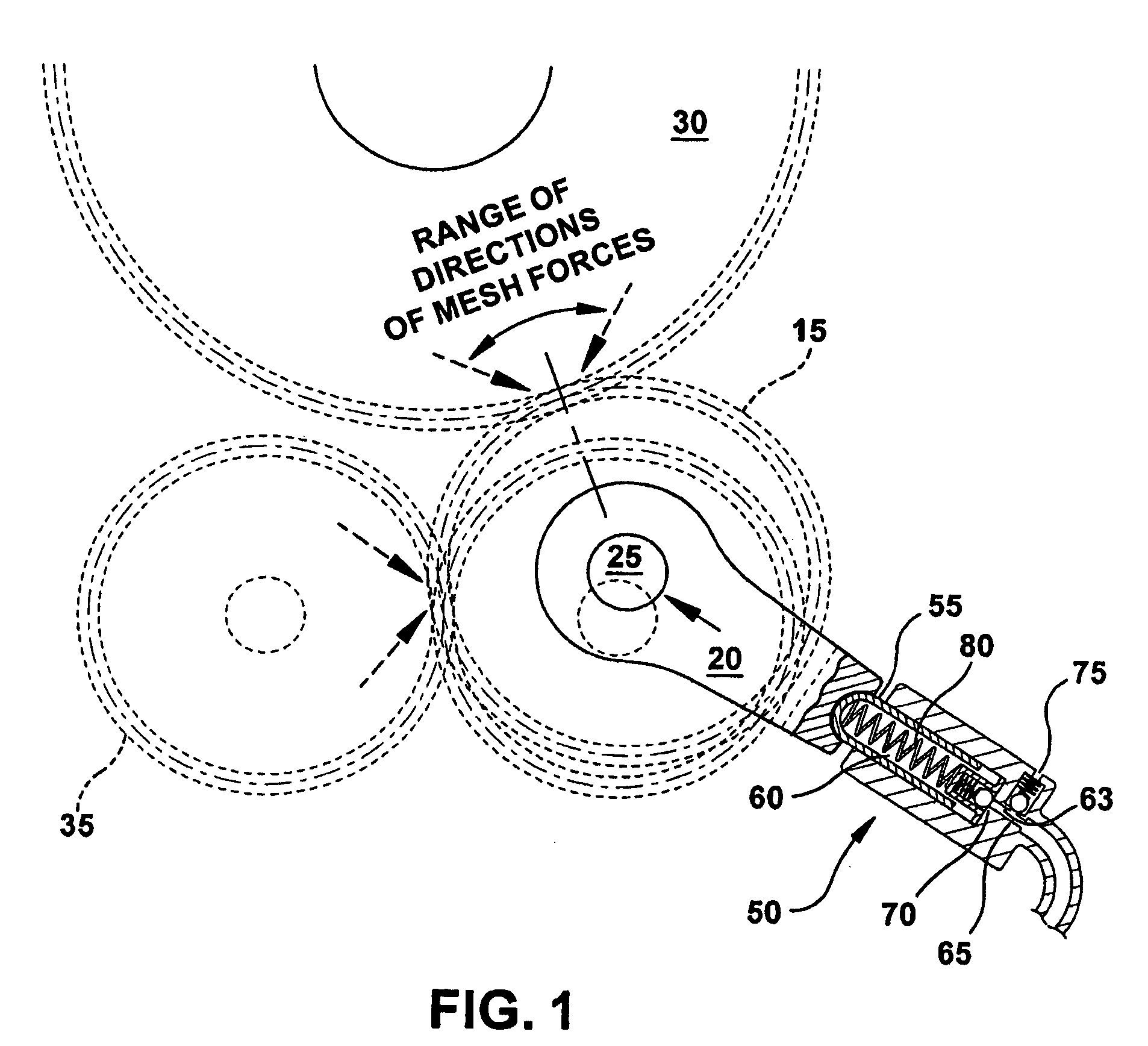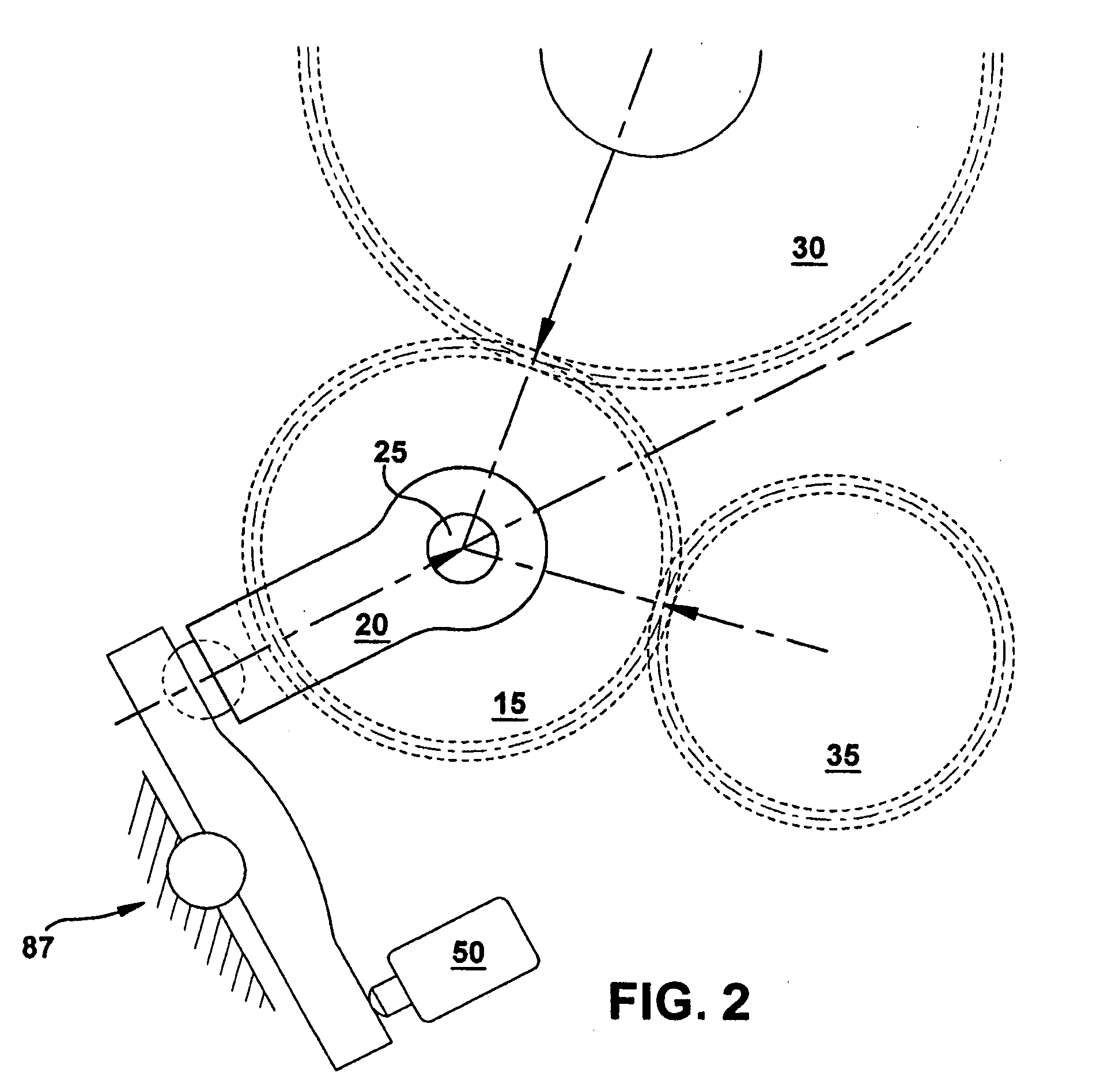Gear-driven balance shaft apparatus with backlash control
a technology of gear-driven balance shaft and backlash control, which is applied in the direction of gearing elements, belts/chains/gearrings, hoisting equipments, etc., can solve the problems of acoustic emission, general unsuitability of toothed belt drives for application requirements, and unsuitable for toothed belt drives
- Summary
- Abstract
- Description
- Claims
- Application Information
AI Technical Summary
Benefits of technology
Problems solved by technology
Method used
Image
Examples
Embodiment Construction
[0024] Referring now to the drawings, which show several embodiments of the invention only for the purpose of illustration and not for purposes of limiting the same, an apparatus for controlling backlash generally comprises an intermediate gear capable of adjustably meshed engagement between a first driving gear and preferably also a second driven gear, and a body rotatably supporting the intermediate gear wherein the body is capable of movement supporting the intermediate gear's adjustably meshed engagement with the first gear and preferably also the second gear.
[0025] While the present invention can be utilized to minimize noise in numerous gearing relationships, the preferred embodiment utilizes the invention with balance shafts used in automotive applications. A common problem associated with balance shafts is a noise known as “gear rattle” generally occurring at engine idle. Gear rattle occurs when the teeth of the balance shaft timing gears lose contact then re-establish cont...
PUM
 Login to View More
Login to View More Abstract
Description
Claims
Application Information
 Login to View More
Login to View More - R&D
- Intellectual Property
- Life Sciences
- Materials
- Tech Scout
- Unparalleled Data Quality
- Higher Quality Content
- 60% Fewer Hallucinations
Browse by: Latest US Patents, China's latest patents, Technical Efficacy Thesaurus, Application Domain, Technology Topic, Popular Technical Reports.
© 2025 PatSnap. All rights reserved.Legal|Privacy policy|Modern Slavery Act Transparency Statement|Sitemap|About US| Contact US: help@patsnap.com



